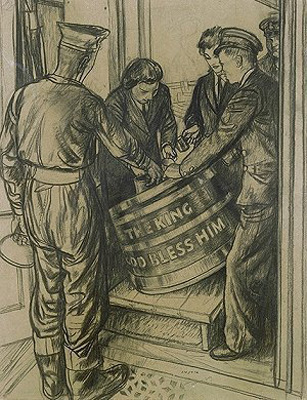It sounds too far-fetched to be true. Sixty birds evolved into a population that now out-numbers the humans in the United States--and all because of Shakespeare. Plus, they don’t have many human fans.
 In 1890, an eccentric American named Eugene Schieffelin had a dream of bringing all the birds that Shakespeare mentioned in his literary works to North America. He decided to release 60 starlings into Central Park in New York City. The next year he released 40 more.
In 1890, an eccentric American named Eugene Schieffelin had a dream of bringing all the birds that Shakespeare mentioned in his literary works to North America. He decided to release 60 starlings into Central Park in New York City. The next year he released 40 more.Shakespeare included over 50 species of birds in his plays and poetry and probably used more references to birds than any other writer. They included everything from ospreys to crows. In his play Henry IV the bard wrote about starlings’ ability to mimic the human voice.
During the 1800s there were many societies formed that wanted to bring species of plants and animals to America that reminded them of home in Europe and other places. The result was that many of them became invasive and eradicated native plants and animals.
 From Schieffelin’s effort, we now have over 200,000,000 starlings that threaten several species of birds, devastate crops, and destroy property across the continent. Bluebirds, woodpeckers, and purple martins have been the most affected of the cavity-nesters.
From Schieffelin’s effort, we now have over 200,000,000 starlings that threaten several species of birds, devastate crops, and destroy property across the continent. Bluebirds, woodpeckers, and purple martins have been the most affected of the cavity-nesters.My nature loving, purple martin landlord husband never kills a living thing, but starlings are the exception to the rule. Even though he’s convinced his only way into heaven is his life-long commitment to saving bugs and other animals from death, he kills starlings.
After happily counting thirteen eggs laid in his purple martin house, he discovered that starlings had killed some adults and broken the eggs. That was the day he declared war on the aggressors. Since starlings return to nesting places year after year, it is especially important to stop their nesting as quickly as possible.
In some parts of the country, starling traps made to look like martin houses yield piles of victims which are then gassed. Across the nation, wildlife services estimate that more than a million a year are killed. Dairy farmers who do not cover their piles of cattle food attract starlings. Wildlife enthusiasts, hoping to attract other species such as wood ducks, have taken to shooting and trapping the birds.
Control of the starlings is mandatory if bluebirds and purple martins are to be protected and remain as part of the wildlife population. Eliminating the starling is probably impossible, but lowering the $800,000 in crop damage done annually is an important goal.
Like all things, starlings have served a purpose. In Washington State where the comeback of the peregrine falcon since stopping the use of DDT has been studied, starlings play a helpful role. They are prey for the falcons and help to sustain them. Amazingly, some people even keep starlings as pets.
###

